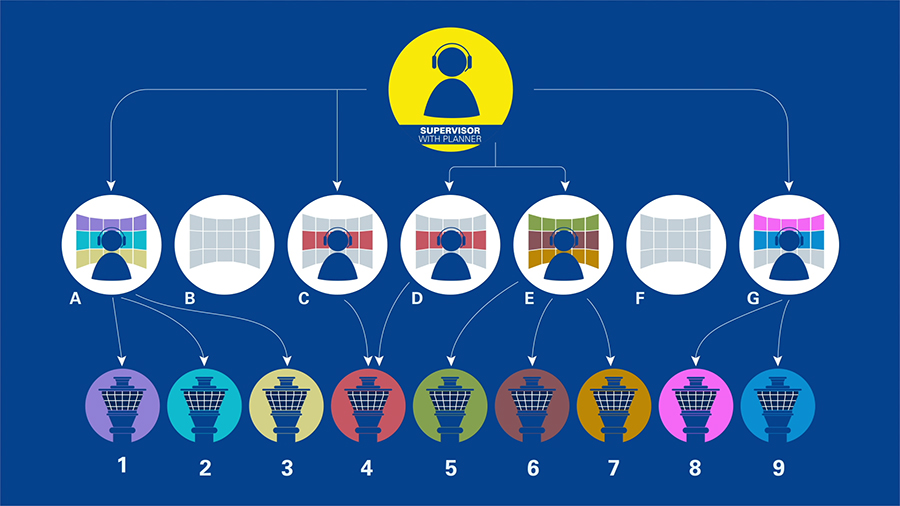Remote tower services for multiple airports
Providing air traffic services to multiple airports from one location brings cost benefits in terms of shared resources, job satisfaction, human performance and training costs. A remote tower centre (RTC) equipped with a number of remote tower modules can provide services to one or more airports from each module.
To increase the number of airports and traffic volume that can be safely controlled from a RTC, SESAR is examining the flexible and dynamic allocation of remote tower modules. The research looks at additional automation functionalities which can be integrated into the module, such as conformance monitoring and task prioritisation, in order to allow more airports to be controlled simultaneously from one module by one controller. Planning an efficient allocation becomes more complex with a RTC compared to a single module as any of the airports within the RTC can be grouped and ATCOs can be allocated to remote tower modules and airport in a dynamic way, depending on the traffic load at each airport and ATCO workload among other parameters.
This candidate solution considers support tools to assist the RTC supervisor in the task of allocating ATCOs and aerodromes in a remote tower centre. It enables a flexible and dynamic allocation of airports connected to different remote tower modules over time. In addition, the candidate solution addresses harmonised procedures across all the remote tower modules in the RTC to make it easier for controllers to hold endorsements for more than three airports.
Benefits
-
Enhanced safety
-
Increased cost efficiency
-
Improved human performance
Datapack

